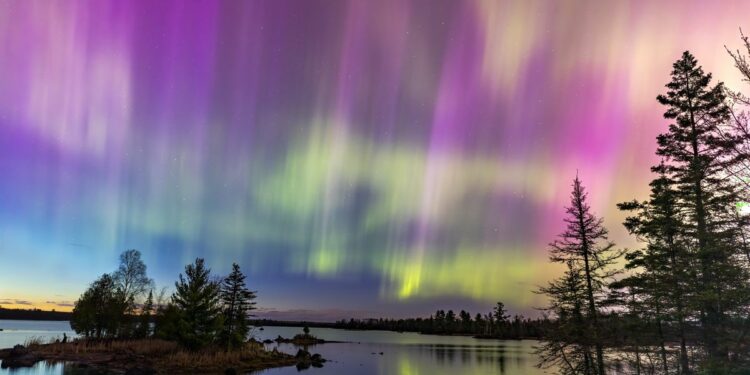Breaking space news, the latest updates on rocket launches, skywatching events and more!
Similar to Earth’s weather, space weather is unpredictable and challenging to forecast. While geomagnetic storm warnings of this level are uncommon, they can still sometimes fizzle to nothing.
Sara Housseal, a space weather forecaster, took to X to convey the importance of taking any timings very lightly.
“With numerous CMEs in play, it is extremely difficult (if not impossible) to determine specifics with timing,” Housseal wrote.
PSA to the mets and journalists that are gonna wanna talk about the forecasted G3-G2 storm for the 30th-31st ‼️PLEASE TAKE TIMING VERY LIGHTLY. With numerous CMEs in play, it is extremely difficult (if not impossible) to determine specifics with timing. SWPC does the best… pic.twitter.com/8EazD90yT8July 28, 2024
As we approach July 30, space weather forecasters will better understand whether and when to expect the CME’s arrival.
If you want to keep a watchful eye on the space weather conditions and know when (and where) to look out for auroras, I recommend downloading a space weather app that will let you know the predicted conditions based on your location. I use an app called “My Aurora Forecast & Alerts” available on iOS and Android. But any similar app should do the job. I then couple this with the Space Weather Live app available on iOS and Android. This app is great as it gives you more of an insight into whether the space weather conditions are looking promising for aurora activity.
How could this event compare to May’s auroras?
The Aurora Australis, also known as the Southern Lights, glow orange and red on the horizon over waters of Lake Ellesmere on the outskirts of Christchurch on May 11, 2024 in this photo by AFP and Getty photographer Sanka Vidanagama. (Image credit: SANKA VIDANAGAMA/AFP via Getty Images)
Though the upcoming solar storm may not be as intense as May’s solar storm that sparked global auroras, it could still put on quite the show.
“It may not be as intense as the Gannon Storm back on May 10, but this compression of multiple back-to-back storms has at least G3 if not G4-level potential,” space weather physicist Tamitha Skov wrote in a post on X.
With at least three if not four Earth-directed #solarstorms launched earlier today, this is sure to be the icing on the cake. It may not be as intense as the Gannon Storm back on May 10, but this compression of multiple back-to-back storms has at least G3 if not G4-level… https://t.co/cYnDnPNqigJuly 28, 2024
Only time will tell as to whether this G3 storm prediction manifests into anything close to the May superstorm.
So for now, keep your eyes fixed on the current space weather forecasts and make sure those camera batteries are charged!
Editor’s note: If you capture a stunning photo or video of the northern lights (or southern lights!) and want to share them with Space.com for a possible story, send images, comments on the view and your location, as well as use permissions to [email protected].
Source link : https://www.space.com/aurora-alert-northern-lights-july-mid-latitudes-us-europe-cannibal-cme
Author :
Publish date : 2024-07-29 13:02:24
Copyright for syndicated content belongs to the linked Source.



